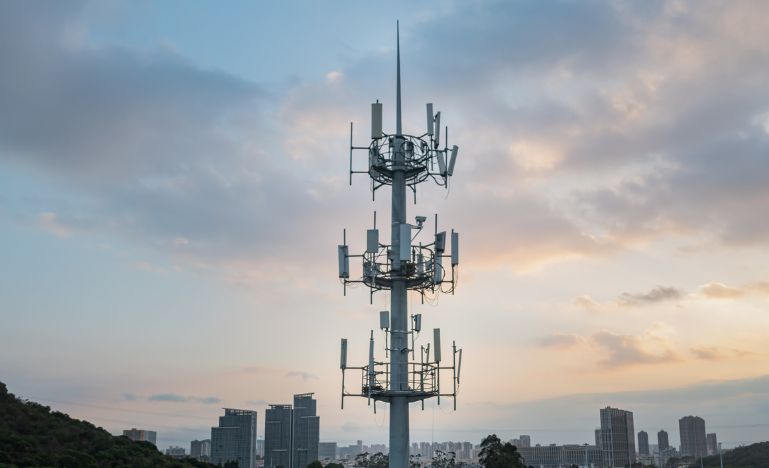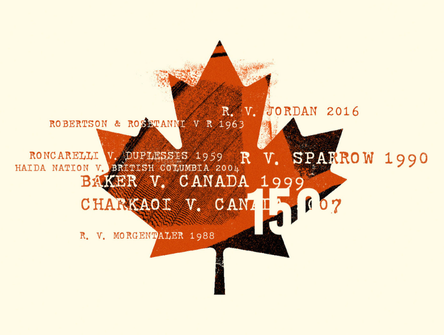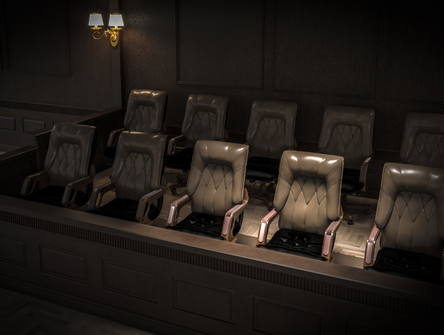La Cour suprême conclut que les lignes de transmission ne comprennent pas les antennes G5
La décision pourrait entraîner plus de résistance contre leur installation dans des lieux municipaux compte tenu des théories du complot entourant cette technologie

Dans une décision à sept contre deux, la Cour suprême du Canada a conclu que le régime d’accès à l’intention des entreprises de télécommunications en vertu de la Loi sur les télécommunications, qui leur donne accès à des lieux publics aux fins d’installation et d’entretien, ne s’applique pas aux antennes petite cellule nécessaires à la couverture du réseau 5G partout au pays.
La technologie de téléphone cellulaire antérieure nécessitait environ 13 000 grandes tours à l’échelle nationale pour une couverture de réseau. Toutefois, pour la technologie 5G, il faut de 250 000 à 300 000 antennes petite cellule. Les deux ont besoin d’un raccordement fixe, mais la Cour d’appel fédérale et la majorité de la Cour suprême ont conclu que le Conseil de la radiodiffusion et des télécommunications canadiennes (CRTC) a correctement interprété la Loi, soit que la ligne de transmission ne s’applique qu’à un raccordement fixe.
« Le Parlement entendait que l’accès à ces lieux fasse l’objet de négociations de bonne foi entre les entreprises et les administrations publiques compétentes telles les municipalités », a écrit la juge Mary Moreau pour la majorité.
« Si un changement législatif est souhaitable en raison de l’évolution de considérations d’intérêt général, c’est le rôle du Parlement d’apporter un tel changement. »
Bien que la Loi ait été modifiée pour la dernière fois en 1993, la majorité a rejeté l’allégation selon laquelle l’évolution de la technologie ne nécessitait pas une interprétation législative dynamique de façon à inclure les transmissions sans fil. De plus, la neutralité technologique dans cette affaire pouvait viser les types de lignes de transmission – cuivre, câbles coaxiaux et fibre optique – plutôt que la transmission sans fil.
« D’un point de vue général, la caractéristique la plus intéressante de cette affaire est qu’elle abordait l’application d’une disposition législative très vieille et une nouvelle technologie », dit Paul Daly, professeur de droit à l’Université d’Ottawa, qui est intervenu dans l’affaire pour le compte de l’Association canadienne des télécommunications.
« Il n’y avait pas d’antennes 5G lorsque le Parlement a ajouté les mots “ligne de transmission” dans la Loi sur les télécommunications. »
Selon lui, l’interprétation législative dynamique peut être très controversée. Bien qu’il soit sensé de tenir compte de la nouvelle technologie, il faut se demander si cette question relève des cours, du Parlement ou de tribunaux administratifs, comme le CRTC. La Cour suprême a indiqué que pour l’objet et le contexte de la loi, lorsque l’interprétation était relativement étroite, la marge de manœuvre pour l’appliquer à la nouvelle technologie n’est pas très grande.
« Pour la majorité, l’expression “ligne de transmission” concerne un raccordement fixe, qui ne s’applique tout simplement pas aux antennes 5G », dit Me Daly.
« À l’avenir, il ne sera plus nécessaire d’avoir une théorie distincte de l’interprétation législative dynamique. »
Ajay Gajaria, un associé chez Aird & Berlis LLP à Toronto et ancien président de la Section du droit municipal de l’ABC, dit que la décision est bénéfique pour les municipalités parce qu’elle leur accorde un contrôle important de l’infrastructure publique et des servitudes de passage.
« Concrètement, elle entraînera une modification législative à la Loi sur les télécommunications ou de meilleurs accords de collaboration partout au Canada entre les entreprises de télécommunications et des municipalités ou des regroupements de municipalités quant au déploiement général de la technologie 5G et en particulier des antennes petite cellule qui seront installées sur des infrastructures municipales », dit Me Gajaria.
Les municipalités doivent gérer efficacement un grand éventail de biens, y compris les abribus, les poteaux téléphoniques et les infrastructures physiques où les antennes seront installées.
« C’est important non seulement du point de vue du contrôle et de la coordination avec d’autres services publics, puisque ces derniers ont souvent des droits d’accès à une servitude de passage, mais également pour ce qui est de la planification et de la coordination des immobilisations de l’infrastructure et de la différenciation régionale », dit Me Gajaria.
Même si les contextes régionaux sont probablement différents partout au Canada, cette décision permet la négociation de bonne foi d’accords par les entreprises de télécommunications et les administrations locales.
Me Gajaria indique qu’il y a eu des frictions à cet égard dans le passé, étant donné les intérêts concurrentiels par rapport à la même infrastructure physique et les différents objectifs primordiaux.
Dans sa dissidence, la juge Suzanne Côté, avec l’accord de la juge Sheilah Martin, a affirmé que l’interprétation étroite du CRTC n’avait aucun sens étant donné que ces petites antennes nécessitent toujours un raccordement fixe au régime d’accès. Elle a également laissé entendre que la séparation des antennes du régime d’accès va à l’encontre de la neutralité technologique.
La Loi sur les télécommunications et la Loi sur les radiocommunications devaient s’appliquer de façon concomitante, la dernière régissant les signaux, comme les transmissions de téléphones cellulaires, et opérer « à titre de régime statutaire interconnecté », a-t-elle noté.
« [La Loi sur les radiocommunications] ne prévoit aucun mécanisme permettant au Ministre de gérer les différends éventuels entre une entreprise et une entité publique en cas d’impasse au sujet de l’accès », a écrit la juge Côté.
« Adopter l’interprétation de ma collègue aurait pour effet d’empêcher le CRTC de fixer les conditions d’accès à un emplacement envisagé pour l’installation de petites cellules 5G. Cela veut dire qu’une municipalité ou une autre administration publique aurait, dans les faits, un droit de veto si une entreprise ne parvenait pas à s’entendre avec elle pour obtenir l’accès à un lieu d’installation. »
Me Daly dit qu’il sera très délicat d’administrer la question à l’avenir, étant donné le niveau de négociation requis.
Me Gajaria croit que la meilleure façon d’aborder cette question est au moyen d’une modification législative plutôt que devant les tribunaux. Il faudrait soit modifier la Loi sur les télécommunications de façon à élargir la définition de « ligne de transmission » pour inclure les antennes, soit ajouter un mécanisme semblable de règlement des différends dans la Loi sur les radiocommunications.
Selon lui il existe une solution pratique dans l’éventualité où les parties ne peuvent en venir à un accord d’accès à l’amiable qui protégerait les intérêts des deux parties.
« Si la décision d’un arbitre doit avoir préséance sur le processus décisionnel d’une administration locale élue responsable, la Loi sur les télécommunications prévoit une façon et une méthode claires. »
Étant donné la prépondérance des théories du complot entourant la technologie 5G, cette décision pourrait entraîner plus de résistance contre son installation dans un lieu public dans les municipalités, où les dirigeants locaux pourraient être attirés par ce raisonnement.
« La technologie 5G est publiquement et politiquement controversée, ce qui donnera aux municipalités une plus grande marge de manœuvre pour la refuser », selon Me Daly.
« Autrement dit, tout se jouera dans les négociations. »


